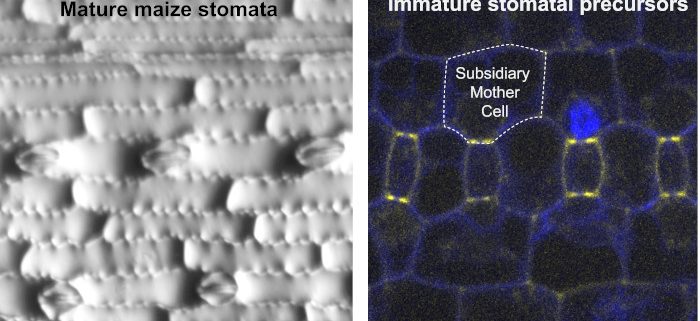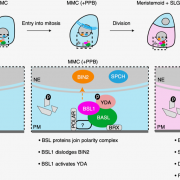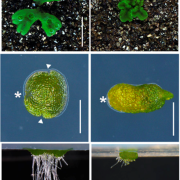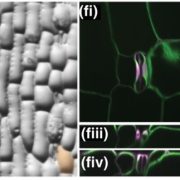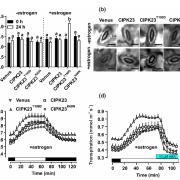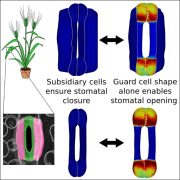At the right time and in the right place: WPRs functions in maize stomatal development
Nan et al. examine the localization of key factors in maize stomatal development.
Qiong Nan and Michelle Facette
Department of Biology, University of Massachusetts, Amherst, MA, 01003, USA
Background: Stomata are small pores on the plant surface that open and close to allow gas exchange––allowing plants to “breathe”. Plant species have different numbers, shapes, and arrangements of stomatal cells. In maize (Zea mays), stomata consist of two guard cells flanked by two subsidiary cells. Subsidiary cells are formed by an asymmetric division. Asymmetric cell divisions occur when a mother cell divides to give two cells that have different sizes, shapes, and/or functions––in this case a specialized subsidiary cell and a generic pavement cell. The asymmetric division of the subsidiary mother cell is a model to understand how plants regulate asymmetric divisions, which are important for forming different cell types. This division is regulated by several proteins that are unevenly distributed (polarized) in the mother cells prior to the division, including two receptors of the Pangloss (PAN) family, PAN1 and PAN2.
Question: What proteins work together with PAN1 and PAN2 during maize subsidiary mother cell polarization? What cellular and molecular processes are important for maize subsidiary cell formation, and asymmetric divisions in general?
Findings: We found that members of the WPR protein family physically interact with PAN receptors. WPRs polarly localize in subsidiary mother cells before division, and this polarization depends on PAN2 but not PAN1. When WPR proteins are missing, or there are increased levels of WPR proteins, subsidiary cells do not form properly. WPR proteins directly bind to the cytoskeleton––specifically F-actin. In fact, markers that label the actin cytoskeleton are altered when a WPR protein is overexpressed in maize.
Next step: Since the localization of WPRs depends on PAN2, but not PAN1, the relationship between the two different receptors and WPRs may differ. Understanding how PAN2 recruits WPRs to their location, or additional proteins that interact with WPRs will help us understand the function of the proteins in the pathway. In particular, how WPRs might regulate actin filament dynamics will provide an understanding of the function of WPR proteins in polarity, and in general.
Reference:
Qiong Nan, Si Nian Char, Bing Yang, Eric J. Bennett, Bing Yang, Michelle R. Facette (2022) Polarly localized WPR proteins interact with PAN receptors and the actin cytoskeleton during maize stomatal development. Plant Cell. https://doi.org/10.1093/plcell/koac301


